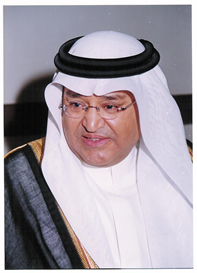Hashim A. Yamani Biography
Hashim A. Yamani is a prominent and highly respected physics educator and researcher in Saudi Arabia who also has an exceptional record as a leader in the public sector. Through his leadership and statesmanship, he has served and continues to serve the physics community in Saudi Arabia very well. He led the drive to establish the Saudi Physical Society in 2002 and the Saudi Center for Theoretical Physics in 2005. Professor Yamani is cherished by many of his students, on whose lives and careers he left a lasting positive impact. Some of them became highly accomplished leaders in various disciplines and professions throughout Saudi Arabia. He has been a dedicated member of AAPT since 1982. He is also an active member of various local and international physics societies and organizations.
Professor Yamani holds B.A. degrees in physics and mathematics (1969) from the University of California-Berkeley and an M.A. degree in physics from Harvard University (1971). He received his Ph.D. in physics from Harvard in 1974 where, under the supervision of W. P. Reinhardt, he, together with E. J. Heller, introduced the J-matrix method of treating scattering. In 1976, he joined the Physics Department at King Fahd University of Petroleum and Minerals (KFUPM) in Dhahran, Saudi Arabia, as an assistant professor. At about the same time, he served as the Assistant Director of the Research Institute at KFUPM. In 1977, he was appointed as Dean of the College of Graduate Studies. In 1978, he left the University for a five-year assignment as the Deputy Chairman of the Board of the Saudi Arabian National Center for Science and Technology (now known as King Abdulaziz City for Science & Technology) in Riyadh, Saudi Arabia. After returning to KFUPM, he served as Manager of the Energy Resources Division at the Research Institute and chaired the Physics Department in 1987-89. In 1995, he left academia to work in the Saudi government where he served in the public sector at various ministerial-level appointments.
Of the many leading public positions that Professor Yamani has held, the following are particularly noteworthy. He was appointed as the Minister of Industry and Electricity for two terms starting in August 1995 and concluding in April 2003. During that period, he developed a long-term strategic industrialization plan for the Kingdom and worked audaciously for the restructuring of the national electricity sector and the integration of the electric power grid to include six Gulf Countries. From May 2003 to March 2008, he was the Minister of Commerce and Industry, in which post he succeeded in making Saudi Arabia a full member of the World Trade Organization (WTO). Given that the Kingdom was at the time the largest economy outside the WTO, this was a major global accomplishment. He retired in March 2008. In April 2010, however, he was appointed President of the newly formed King Abdullah City for Atomic and Renewable Energy. In this City and through the establishment of many policies and regulations, he is leading the efforts to make the Kingdom reduce its reliance on oil as the sole source of energy. Under his leadership and through large-scale projects, the country is exploring alternative renewable and environmentally friendly sources of energy, including solar, wind, and geothermal energy.


